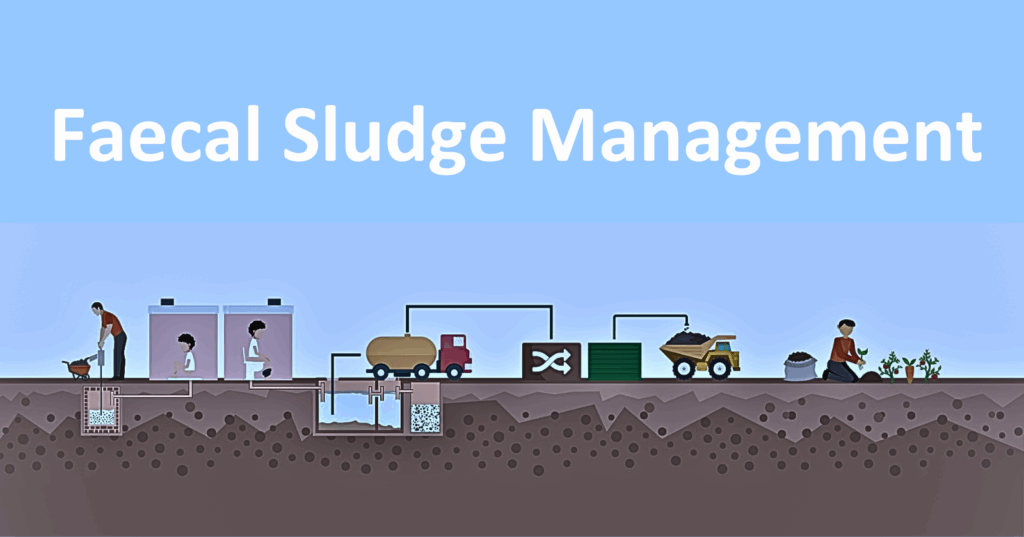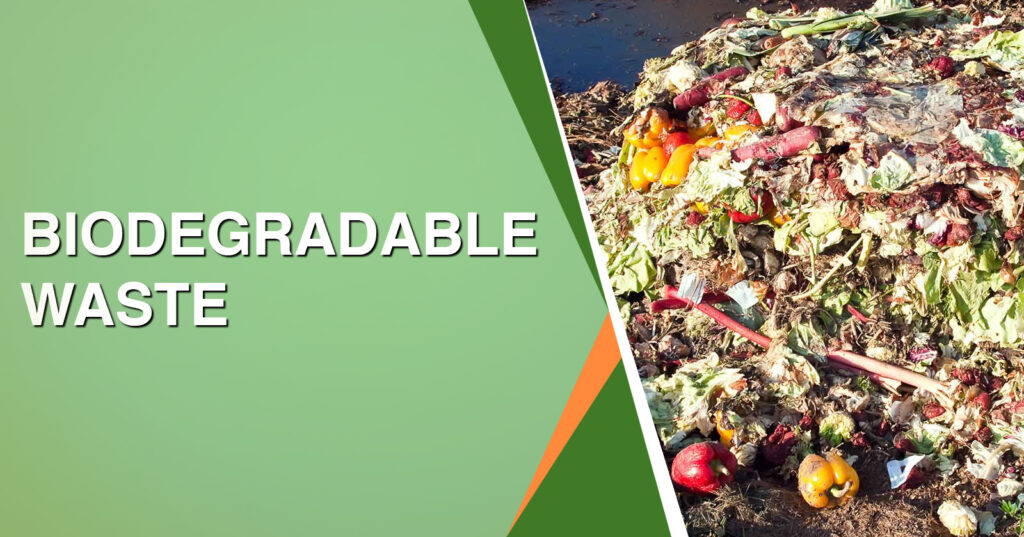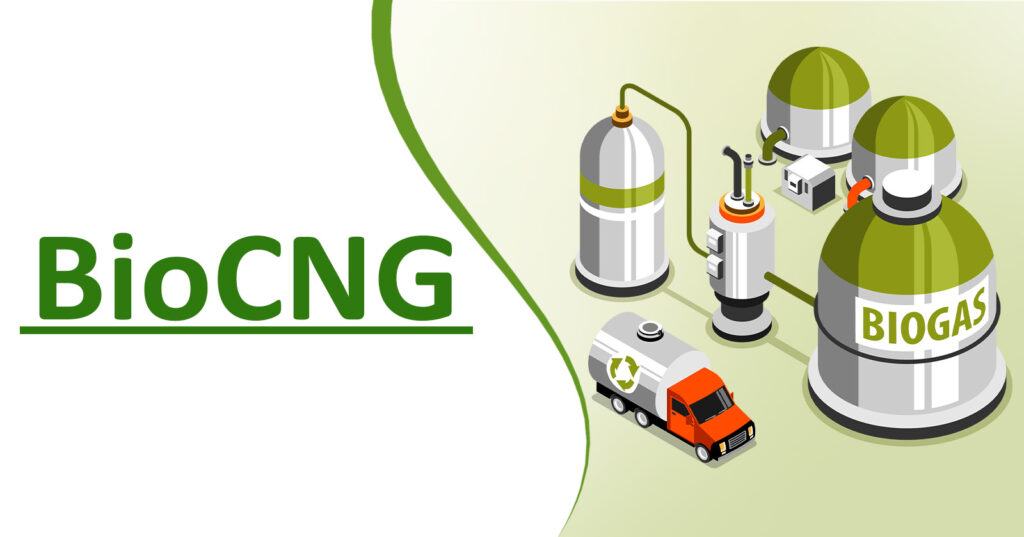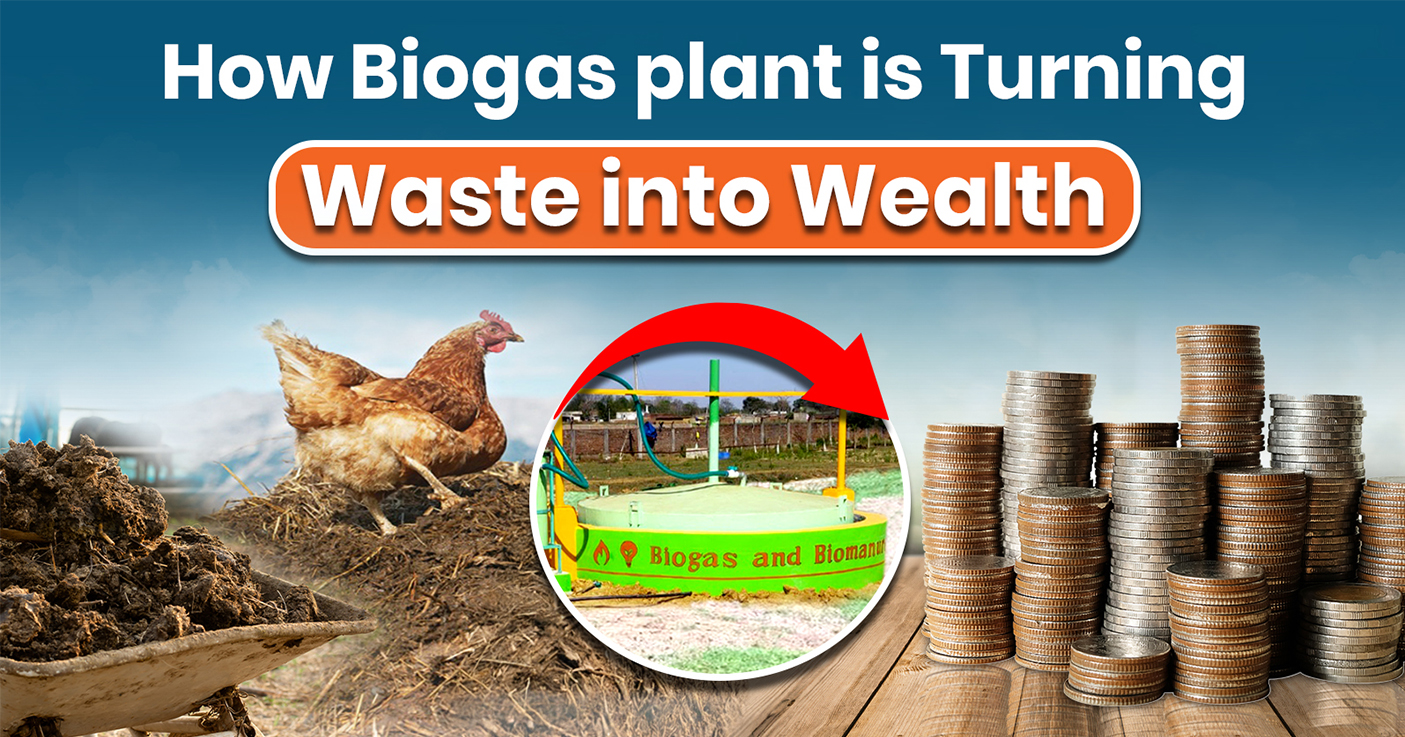India can set a worldwide example by using its agricultural waste to its advantage by converting methane gas from waste. Biogas from waste plants are progressing quickly, with growing environmental concerns and the urge for sustainable solutions today.
Biogas from waste provides an impactful solution for organic waste management, economic growth, and renewable energy production by converting waste into biogas energy. Biomass energy is a renewable source of power derived from organic materials like crop residues, wood, and animal waste. We will discuss how biogas plants help produce methane gas from organic waste.
How are Landfills Harming Our Planet?
The sole place in a city where waste is dumped and buried is popularly known as the Landfill, frequently presenting serious health and environmental hazards to nearby populations.
Despite being essential for trash disposal, a large number of landfills are situated in underprivileged, degraded communities facing discrimination due to various reasons, exposing them to a disproportionate amount of dangerous pollutants.
Sustainable energy solutions are a way to overcome this situation and reduce the amount of greenhouse gas emissions.
Biogas from waste is a sustainable energy solution that helps reduce the amount of greenhouse gas emissions while managing organic waste effectively. Several success stories have showcased how biogas plants benefit the public, businesses, and the environment.
How much biogas is produced from food waste?
Biogas from waste is a good source of renewable energy. With 1 kg of food waste, approximately 50%-70% of methane gas is produced.
The exact yield depends on the food type; different types of food waste have varying organic content and biodegradability. Fruits and vegetables produce less methane gas compared to oily food waste.
Utilizing biogas from waste helps manage food waste and contributes to reducing dependency on fossil fuels.
Why is Organic Recycling Waste Important?
Recycling organic waste is a smart way to manage waste. It converts food waste and other organic materials into useful resources. Many rural communities are adopting biomass energy solutions to meet cooking and heating needs without relying on fossil fuels.
The main benefit is producing biogas, which produces renewable energy and reduces landfill waste. This also cuts down harmful methane emissions. The process also makes a biofertilizer that improves soil health.
Benefits of Biogas
There are more benefits of biogas, such as reducing soil & water pollution, generating organic fertilizers, and much more.
- A well-installed biogas plant can provide you with more benefits, and you can easily take steps towards clean energy.
- Biogas is a renewable energy source. It produces a clean & green energy source.
- Another advantage of biogas is that it produces energy without polluting water.
- Investing in biomass energy projects supports both economic growth and the transition to renewable energy.
- It is an affordable renewable energy source; you can easily go with a biogas plant.
- You can produce natural gas for cooking or electricity by converting waste into biogas.
- It is the best alternative to cooking gas and electricity.
Difference Between Biogas and Natural Gas
Biogas comes from organic waste like food scraps or farm leftovers. Tiny living things break down this waste without oxygen and produce biogas, which mainly consists of methane and carbon dioxide.
Biomethane is the pure methane part of biogas. We clean biogas to remove carbon dioxide and other gases to make biomethane, which can be used as fuel.
Natural Gas comes from deep underground. It forms over millions of years from old plants and animals. It is mostly methane but has some other gases that are removed before use.
How is waste converted into energy from a Biogas Plant?
As mentioned above, Biogas Plants are the source of sustainable energy solutions for the future. Gobar gas production is being done on a large scale in a variety of locations all over the world.
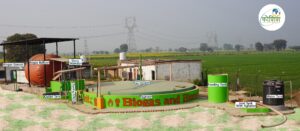
The biogas production is done through anaerobic digestion, a natural process where microorganisms break down organic matter without oxygen.
The digestion process manages biodegradable waste and provides an eco-friendly alternative to fossil fuels. The process of converting methane gas from waste is as follows:
- Organic waste, such as kitchen & agricultural waste, manure, etc, is collected and gathered in one place.
- The waste is placed in the biodigester for the bacteria to decompose, converting waste into methane gas.
- Biogas production primarily consists of methane and is used for several things, such as cooking, heating & generating electricity.
- The remaining liquid part from the digestate, Slurry, is an excellent alternative to chemical fertilizer and is rich in nutrients
NOTE: According to a recent study by the National Association of Clean Water Agencies, the Water Environment Research Foundation, and the Water Environment Federation, wastewater treatment plants have the potential to generate enough Gobargas, approximately 12% of the total national electricity demand.
Biogas plants benefit Farmers, Businesses, and Cities.
The few users of Biogas and how it benefits them are listed below:
| Farmers | Businesses | Cities |
| The digestate is used as manure on farms | The hotels, restaurants & animal farms can install biogas to manage food & poop waste. | The vehicles running on bio-CNG offer clean transportation, and the dependency on petrol and diesel becomes low. |
| Converting waste into biogas manages livestock waste, methane emissions, and foul smells. | Businesses use this energy to generate their own, cutting operational costs. | Municipal waste is converted into renewable energy and used for public service. |
| Biogas plants in rural areas have access to clean cooking gas and low-cost electricity, which also reduces deforestation. | Waste-to-energy solutions help a business’s sustainability profile and also reduce carbon footprints.
Cities |
Innovative waste management methods, such as biogas plants, enhance the sustainability of urban areas. |
How do Government Schemes create new Business opportunities?
Governments around the world are supporting Biogas Plant initiatives in the form of various schemes and incentives provided by them. We will be discussing a few schemes below as well:
SATAT (Sustainable Alternative Towards Affordable Transportation): The scheme encourages the production of methane gas from waste and further conversion into CBG gas, which is the best alternative for petrol & diesel.
MNRE (Ministry of New Renewable Energy): This scheme provides financial assistance to sustainable energy solutions for small-scale and commercial Biogas Plant projects.
National Bio-Energy Mission: This scheme promotes Biogas and other renewable energy sources to the public.
Through these government schemes, several Business opportunities are created, which are as follows
- By setting up commercial organic waste recycling plants for industries and large-scale firms.
- Providing sustainable energy solutions through plant designs, installation, and maintenance.
- By producing organic fertilizers from the leftover digestate byproducts.
- Investing in Compressed Biogas (CBG) production, a vehicle fuel, reduces the dependency on imported fossil fuels.
Biogas Success Stories of 2025: Recently, in Gujarat, a state renowned for its milk production, the cattle farm owners have benefited from this step initiated by the Government of India under the Swachh Bharat Grameen Yojana, Gobardhan Scheme. More than 7400 biogas plants have been established in the last two years. The farm owners are the prime users of biogas plants, and they have been targeted. This Step has resolved many problems.
We also have a recent Biogas Success Story where the Ministry of Agriculture and Farmers Welfare has revised of the 𝐅𝐞𝐫𝐭𝐢𝐥𝐢𝐳𝐞𝐫 𝐂𝐨𝐧𝐭𝐫𝐨𝐥 𝐎𝐫𝐝𝐞𝐫 (𝐅𝐂𝐎) norms for 𝐂𝐨𝐦𝐩𝐫𝐞𝐬𝐬𝐞𝐝 𝐁𝐢𝐨𝐠𝐚𝐬 (𝐂𝐁𝐆) 𝐩𝐥𝐚𝐧𝐭𝐬, bringing a significant breakthrough for the industry.
This regulatory change will enhance the adoption of Fermented Organic Manure (FOM), now classified as 30%-70% moisture, eliminating the dryness & Liquid Fermented Organic Manure (LFOM), now defined with 90%-97% moisture, enabling better utilisation. This is a significant boost in the Bio CNG/CBG industry.
Wrapping Up
The Biogas Plant solution has risen to be a win-win situation for every sector producing organic waste. Reducing landfill waste and generating renewable energy creates new job opportunities, turning methane gas from waste into wealth.
It doesn’t matter which sector you are in; adopting a Biogas plant will eventually lead to a greener and more sustainable environment.
Investing in Biogas Production Plants today is not an environmental responsibility; it’s a wise financial decision with long-term benefits.
Frequently Asked Questions
Question: Why does Gobar gas produce rich nutrient fertilizer?
Answer: Converting waste into biogas is the process of producing methane gas from waste. At the end of the entire procedure, the Slurry remains rich in nutrients and becomes a good source of crop fertilizer. It is also sold in markets at a prominent price by the farmers.
Question: How to make biogas from food waste?
Answer: Food waste is one of the raw material elements that help in biogas production. Food waste is usually generated in bulk from restaurants and hotels. It is dumped in the digester for further processing, and after 45 days, it takes to make methane gas from food waste. Biogas from food waste is not produced in large quantities since most of the production of gobargas is done from poultry litter; it is a prime source, which makes biogas on a large scale
Question: What organic items can be recycled?
Answer: Organic waste recycling is a necessary process that transforms biodegradable waste into valuable resources like compost and renewable energy. By implementing organic waste recycling, nutrient-rich compost is created, which enhances soil fertility, improves water retention, and supports healthier plant growth. This sustainable practice reduces dependency on chemical fertilisers, leading to eco-friendly agricultural solutions.
Question: How Much Cow Dung is Needed to Produce 1 Kg of Biogas?
Answer: To produce 1 kg of biogas, you will need around 55 to 60 kilograms of cow dung. This can vary depending on the quality of the cow dung, the digestion process, and the type of biogas plant.
The main gas produced is methane, which can be used for cooking, heating, or generating electricity.


